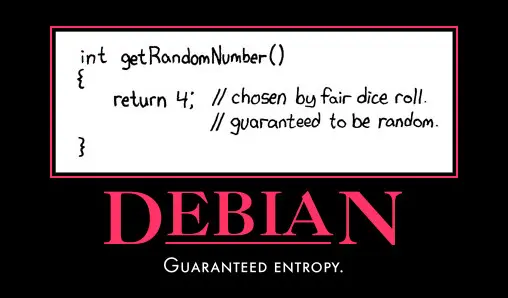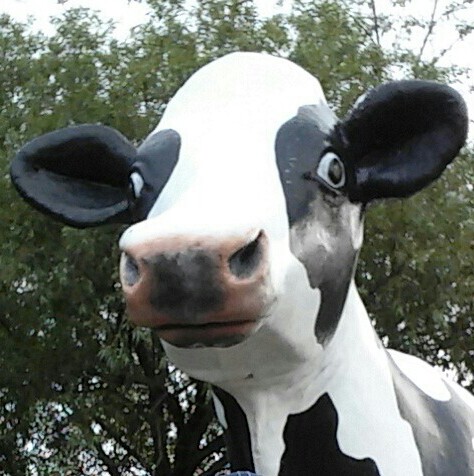The difference boils down to this:
Psudo random numbers come from non-linear dynamic mathematical equations. You put a random number in and it spits a more-or-less random number out.
The fatal flaw of psudo randoms is that it will always give the same series numbers if you begin the equation with the same seed values, but any slight deviation in iniial values will generate a whole different sequence of numbers.
The mechanics of pseudo random numbers comes from statistical combinatorics, nonlinear algebra,fractals, chaos theory, and sensitivity to initial conditions.
True random numbers come from directly measuring physical phenomenon with sufficient randomness in their mechanics.
Things like the decay of a radioactive isotope or lava lamp turbulence have built in randomness. There is no seed or way to generate the same sequence of motions or predicting when isotopes decay. These universal operations have true uncertainty built into them thanks to entropy, the uncertainty principle, fractals, chaos theory, and sensitivitiy to initial conditions.
The physical universe is the most powerful computer there will ever be. It calculates with infinite precision in its mathematical operations using real numbers with infinite non-repeating decimals at the speed of causality/light.
Our best super computers will never be infinitely powerful so theres fundamental limits to how random we can get through computer algorithm generation using finite numbers. True randomness through physical processes cheats by using the universes in built infinite precision and mechanical algorithms and just measures the result.
Cloudflare uses a wall of lava lamps for some of their RNG needs
I see a lot of good answers here but let’s try it from another angle.
How do we get randomness from a function or formula?
For starters let’s setup a few simple rules.
Every time our random function is called we’ll
- Take the last output from a variable we call LAST_RESULT
- If there’s no value in LAST_RESULT we’ll assume the value is 1
- We run a set of calculations storing the value in a variable we call X
- We store the result of these calculations in LAST_RESULT
- We return this new “random” number.
So let’s call it.
> Random() Since LAST_RESULT is undefined SET LAST_RESULT to the value of 1 Set X to the result of this calculation (LAST_RESULT+1) * 3X is now 6
Set X to the result of this calculation (X + 7) / 2X is now 7
Set X to the result of this calculation (rounding to the nearest whole number) X/LAST_RESULTX is now 7
Set LAST_RESULT to the value of XLAST_RESULT is now 7
Return the value of X as the resultResult is 7
Ok. So let’s call it again
> Random() Set X to the result of this calculation (LAST_RESULT+1) * 3X is now 24
Set X to the result of this calculation (X + 7) / 2X is now 16
Set X to the result of this calculation (rounding to the nearest whole number) X/LAST_RESULTX is now 2
Set LAST_RESULT to the value of XLAST_RESULT is now 2
Return the value of X as the resultResult is 2
And if we call it again we get seemingly random results
Random() Result is 4
Random() Result is 3
But the next time you run it you’ll get the same results in the same order. 7, then 2 then 4 then 3
So what you need is something to “seed” the random number calculation.
Something like
SetRandomSeed Set LAST_RESULT to the current second of the day
Then when you call Random after this it starts with that as the prior results and gives seemingly random results.
Of course my calculations are rough and probably fail/repeat after so many calls but it gives you an idea of how this works.
So the trick is to get noise for the seed. That could be the number of non leap seconds since 00:00:00 UTC on Thursday, 1 January 1970 (Unix epoch)
Or the temperature reading of a CPU chip.
Maybe it’s the ratio of red vs yellow from a camera feed looking at lava lamps.
Or the current users average typing speed.
An additional note. Many of those would not be “cryptographically” secure for encryption because they can easily be determined by a third party. We all experience the same “Unix epoch” within a few milliseconds if our system clocks are properly set for example. Or monitored from afar and reproduced (hacked webcam shows they had just typed the following letters in the previous 27 seconds that we know the “algorithm” uses, etc.

Why Debian?
Math! Also, noise!
There are algorithms (a set of math steps) that make pseudo-random numbers. These usually involve large prime numbers, because those usually generate fewer repeating patterns.
A truly random number generator is similar to rolling dice: you use some source of randomness and convert it to a number. All electric circuits produce “noise” (which is often received radio waves and such that interfere with the circuits). Think of tuning a radio to a channel with nothing on it–you get “white noise”, which can be a good source of random information. Then all you need to do is convert that to a range of numbers, and you’re good to go.
These are fairly simplified explanations, so take them with a grain of salt, but they give the general idea.
You can use physical objects like dice or lava lamps that will naturally form random distribution when we check. But Newton and others would argue that even this was a determinant problem and if you had perfect knowledge of the dice and a good physics theory, you could predict the outcome.
We can only recognize randomness by the patterns it leaves behind.
The philosophical truth is that we don’t know if “randomness” is an actual phenomena or just a bucket where we put outcomes we haven’t learned to predict yet. A sort of randomness of the gap. Some have suggested that as a pattern-recognizing machine, the human mind simply can’t conceive randomness. Even the way “randomness” is verified is by looking at the distribution in the outcome and see if it matches the pattern we expect.
The notion that our universe is perfectly causal to the point that you can predict exactly when and where that specific atom will decay is pretty much bunked at this point. Not that living in a probabilistic, quantum physics universe is any fucking easier to comprehend but them’s be the cards we were dealt.
How was it debunked?
From my opinion it is more computer science sorcery than math sorcery.
For true random generation you usually need some specialized hardware for it, that uses sone natural source of random. One could use the decay of a radioactive material as such a source or the noise one can get from audio input. Unfortunately, I don’t know what actual hardware uses.
For pseudo random generation, you usually use a seed (ideally a true random value or something with a high entropy) which you feed into an algorithm like Linear Congruental Generator (LCG) or Mersenne Twister (there are lots of algorithms).
One further important note: Tge use case forvwhich you need random numbers is important. A video game could accept a random number generator with “lower” quality while a cryptographic algorithm always needs a cryptographic secure random number generator (don’t forget: “don’t roll your own crypto”).
Finally there are quasi randim number generators, however this name is very misleading. The mathematical correct term is low discrepancy sequence. There are not random at all but can be used and have useful properties in some settungs where pseudo random number generators can be used. Never in a cryptographic algorithm, though.
An interesting source of randomness is using a diode “in reverse”. Randomly, a few electrons pass through, which can be amplified and measured. One uses a 2^n number of such constructs and XORs the results to get a random bit.
Great write up, now I have to google what a Meraenne Twister is. To use audio input noise as a random number gen I would just hook it up to a pressision digital db meter but I’m guessing the software implementation is a little more practical.
A software solution usually can create “random” faster, with the drawback that its not actual random
The Mersenne Twister was a famous pseudo random number generator when I wrote my diploma thesis in 2009. Today, afaik, PCG (Permuted Congrentual Generator) are better.
They get some dude hammered drunk, then stand him by a pole and ask him to take 100 steps.
I love the idea of millions of drunk dudes by poles being employed just for random number generation
Might be the only job that’s left after StarNet takes over.
Nice try skynet
1000111000111100001100101010101001111111010010






